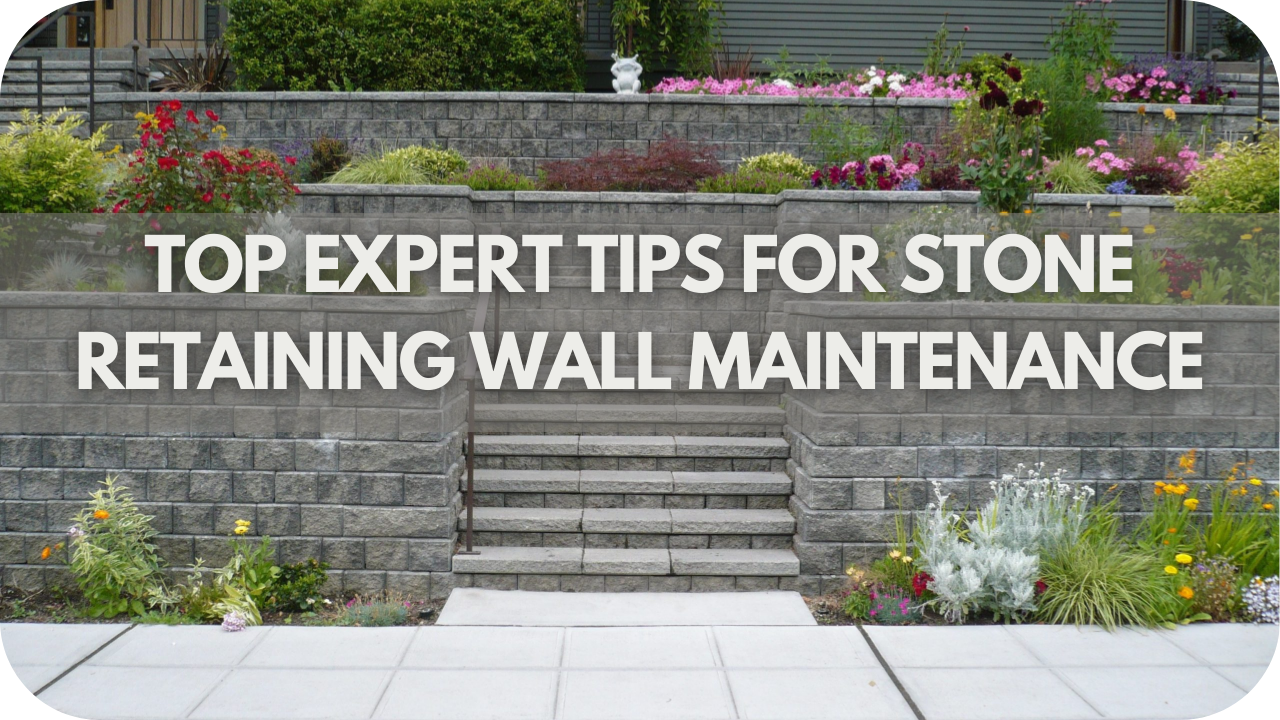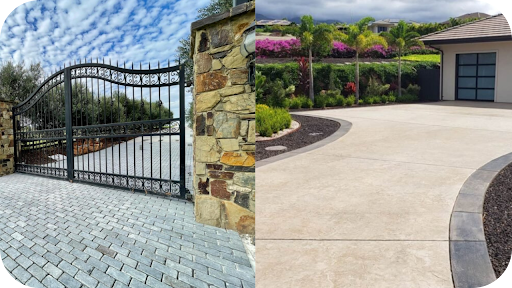
When I first built my stone retaining wall, I admired its beauty but soon realised that regular upkeep was the key to keeping it strong.
Over the years, I’ve gathered essential tips to help others maintain their walls for the long haul. Whether you’re dealing with wear from the elements or simple ageing, the right care makes all the difference.
In this guide, I’ll share my top expert tips for ensuring your stone retaining wall remains durable and attractive for years to come.
1. Inspect Your Wall Regularly
Regular inspections are the first step in preventing costly damage. Every few months, walk along your stone retaining wall and look for signs of wear, such as cracks, loose stones, or bulging areas.
Soil movement or water pressure may cause structural issues over time, so it’s crucial to catch these early. Pay special attention after heavy rain or freezing conditions, as these can accelerate wear.
Any small problem left unchecked can quickly escalate, leading to expensive repairs. Consistent monitoring helps maintain the wall’s strength and longevity, ensuring it remains both functional and visually appealing.
2. Ensure Proper Drainage
Effective drainage is crucial for the health of your stone retaining wall. Water build-up behind the wall can cause pressure, leading to cracks or shifting.
Ensure drainage systems, such as weep holes or gravel layers, are clear and functioning correctly. Without proper drainage, moisture can seep into the stone, weakening the structure over time.
You should also inspect the surrounding soil to ensure it slopes away from the wall, preventing water from pooling. Maintaining adequate drainage will protect your wall from erosion and help preserve its long-term stability and durability.
3. Repair Cracks and Loose Stones
Addressing cracks and loose stones promptly is essential to maintaining your wall’s integrity. Even tiny cracks can quickly worsen if left untreated, especially when exposed to water or extreme temperatures.
Check for loose stones regularly and secure them with appropriate mortar before they become a bigger issue.
Cracks should be filled with stone-compatible filler to prevent water from entering and causing further damage. Ignoring these minor repairs can lead to larger, more expensive problems down the line.
4. Keep Vegetation Under Control
Vegetation growing near or on your stone retaining wall may look appealing but can cause significant damage over time. Roots from nearby plants can displace stones or weaken mortar, compromising the wall’s stability. Regularly trimming plants and removing weeds between the stones is essential to prevent root intrusion.
Avoid planting large trees or shrubs too close to the wall, as their roots can cause long-term structural issues. Keeping vegetation under control ensures your retaining wall remains secure, helping to prevent the need for costly repairs in the future.
5. Clean Your Stone Retaining Wall
Keeping your stone retaining wall clean is essential for its appearance and durability. Over time, moss, algae, and dirt can accumulate, which may trap moisture and cause damage. Gently scrubbing the surface with a mild detergent and water helps remove these build-ups.
For tougher stains, a pressure washer on a low setting can be used to avoid damaging the stone. Regular cleaning not only preserves the wall’s beauty but also prevents the growth of harmful substances that can weaken the structure.
6. Apply a Protective Sealant
Sealing your stone retaining wall is vital in protecting it from weather damage. A high-quality sealant helps prevent water from seeping into the stone, which can lead to cracks during freeze-thaw cycles.
Applying a sealant reduces the risk of moisture absorption, staining, and erosion. Depending on exposure to the elements, it is recommended that your wall be resolved every few years. Ensure the sealant is compatible with the type of stone used in your wall for the best results.
7. Prevent Soil Erosion Around the Base
Soil erosion around the base of your stone retaining wall can undermine its stability. Over time, rainwater can wash away the soil, weakening the foundation. Adding gravel or mulch around the base can help stabilise the soil and improve drainage.
Installing landscape fabric can also reduce erosion by holding the soil in place. Avoid planting large shrubs or trees too close to the wall, as their roots may disrupt the soil. Preventing soil erosion not only protects the foundation but also ensures the long-term durability of your retaining wall.
8. Distribute Load Evenly Behind the Wall
Maintaining even load distribution behind your stone retaining wall is essential for its stability. Placing heavy objects, like garden beds or structures, too close to the wall can create uneven pressure, leading to bulging or collapse. Ensure the soil and landscaping features are evenly distributed to avoid concentrating weight in one area.
When planning your garden, leave sufficient space between the wall and heavy elements to minimise stress. Proper load distribution not only extends the life of your retaining wall but also helps prevent costly structural damage in the future.
9. Prepare for Winter Weather
Winter can be tough on stone retaining walls, especially in colder climates. Freezing and thawing cycles cause water to expand within the stone, leading to cracks. Before winter arrives, inspect your wall for any cracks or weaknesses and address them immediately.
Ensure that drainage systems are clear to prevent water build-up. Applying a sealant before the cold sets in adds an extra layer of protection against moisture. Removing snow and ice promptly will also reduce the chances of water seeping into cracks.
10. Know When to Call a Professional
Sometimes, DIY maintenance isn’t enough to keep your stone retaining wall in good shape. If you notice significant cracks, leaning, or bulging, it’s time to bring in an expert. Large structural issues may require professional repair to prevent collapse or further damage. Trying to fix complex problems yourself can lead to bigger issues down the line.
A qualified professional can assess the extent of the damage and recommend the best course of action. Don’t wait until the problem worsens—acting early will save you from costly repairs and ensure your wall’s long-term stability.
Conclusion
By following these expert tips, you’ll keep your stone retaining wall strong, durable, and visually appealing for years to come. Regular maintenance is key to preventing costly repairs and preserving its structure. For professional help or further advice on maintaining your wall, contact Splendour In Stone Melbourne today and ensure your wall’s long-term stability.
More To Explore

Comparing Natural Stone and Concrete for Outdoor Projects
Choosing the right surface for your outdoor space is more important than it seems. Pick the wrong material and you could face early wear, fading,

The Best Sustainable Stone Options for Green Building Projects
The building sector accounts for nearly 40% of global carbon emissions, and material choices play a huge role in that impact. Keep using resource-heavy materials,


